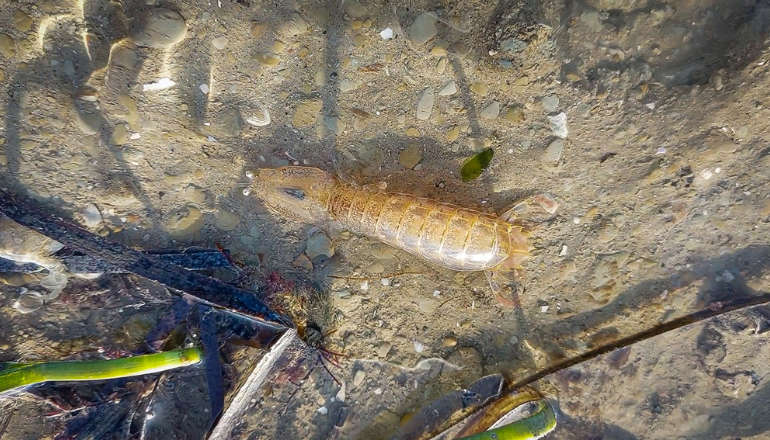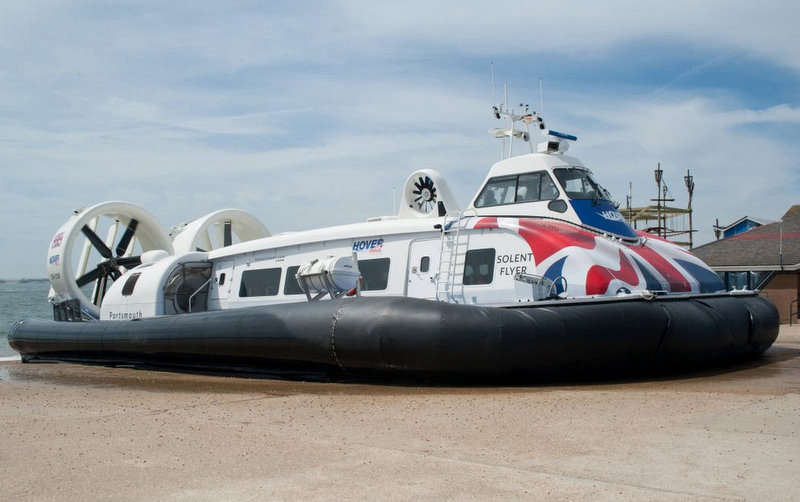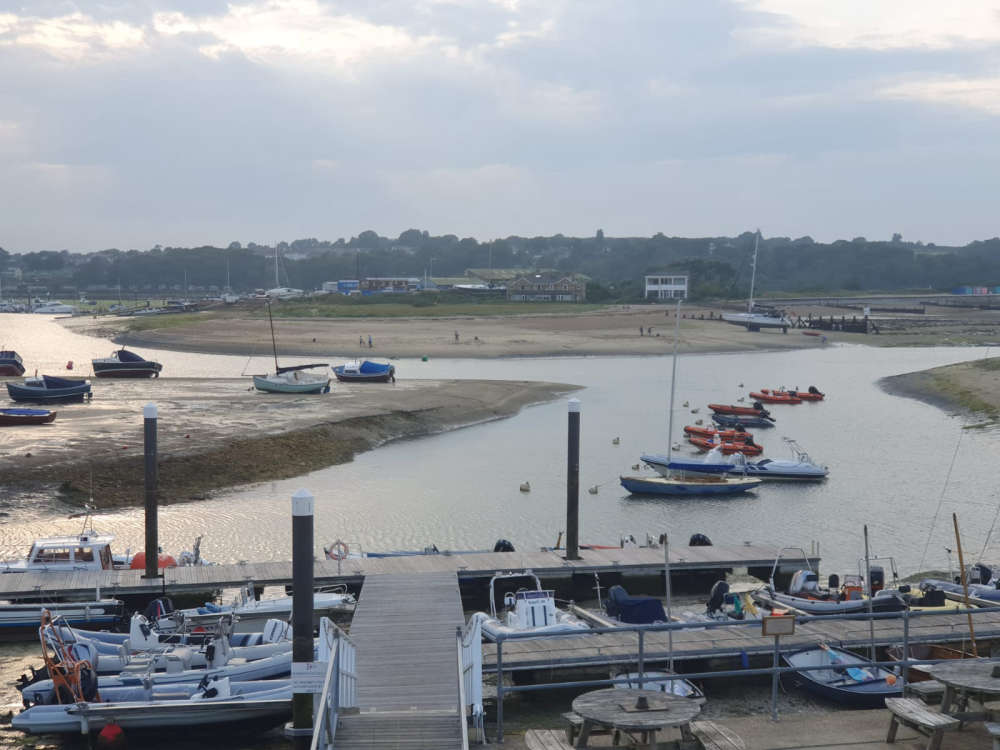
In an extraordinary find in the waters off the Isle of Wight, a mantis shrimp - renowned for its unique vision and hunting prowess - has been recorded on video, offering a rare glimpse of this elusive species thriving in UK marine waters.
Recorded near Bouldnor, Isle of Wight, this remarkable video find marks only the second known sighting of a mantis shrimp in the area, highlighting the unique marine biodiversity of the region.
The mantis shrimp (Rissoides desmaresti) was discovered by a member of the public, Jean Saunders, who contacted Hampshire & Isle of Wight Wildlife Trust to confirm its identification.
Jean’s video provides one of the most detailed records of this species in UK waters.
Sightings of mantis shrimp in UK waters are rare, only a few isolated sightings have been recorded along the south and west coasts of the British Isles, usually dead animals are washed up on the shore or captured in fishing gear.
Jean explained:
“While walking along a shingle bank at Bouldnor during low tide, I noticed movement around 4:45pm.
"On closer inspection, I found a mud-covered creature about 4 inches long, tangled in seagrass and hard to identify.
"My brother and I carefully moved it into a shallow pool, and once the mud washed off, we got a clearer view but still couldn’t place it.
"Back home, I searched online and thought it looked like a mantis shrimp, though I found that unlikely, so I decided to contact the Trust."
Mantis shrimp live in burrows, only leaving their shelter to hunt for prey or find a mate. This behaviour makes them particularly hard to spot, as they spend most of their lives hidden in these burrows.
Rising ocean temperatures could lead to more sightings in the UK as mantis shrimp expand their range beyond their traditional tropical and subtropical habitats.
Despite their name, mantis shrimp are not true shrimp but a type of stomatopod: a relative of crabs and lobsters that has existed on Earth for over 400 million years.
These fascinating creatures are divided into two categories: spearers and smashers, distinguished by the way they use their specialised claws.
The mantis shrimp discovered in the Solent is a ‘spearer’, a variety equipped with sharp, spiny claws designed to grasp and impale prey. Though small (about 10cm in length) these impressive predators that can kill prey bigger than themselves, typically fish and crabs.
Mantis shrimp possess the most complex eyes in the animal kingdom.
Each eye contains up to 16 different types of photoreceptors, 12 dedicated to detecting colour, including ultraviolet and four for other light characteristics such as polarisation.
With eyes mounted on movable stalks that can also rotate, the optical capabilities of mantis shrimp are very different to our own, allowing them to perceive the world in a way completely different from humans, and uniquely adapted to their lightening ambush predation and social interactions.
Dr Tim Ferrero, Senior Specialist in Marine Conservation at Hampshire & Isle of Wight Wildlife Trust, said:
“It's the best record of a live mantis shrimp in UK waters that I've ever seen.”
“What’s even better is this record showing the mantis shrimp within seagrass, a habitat vitally important for marine life including these remarkable crustaceans.
"In the UK, it is estimated that we have lost up to 92% of seagrass over the past century, making this discovery particularly poignant.
“The Trust works tirelessly to restore, protect and monitor this precious marine habitat so that species like the mantis shrimp have a habitat to thrive in.”
Globally, the species is listed at least concern on the IUCN (International Union for Conservation) Red List of Threatened Species.
The species is considered locally threatened by marine aggregate extraction and coastal management interventions.
These activities disrupt the sensitive environments that mantis shrimp depend on, such as sandy or rocky seabeds and seagrass meadows.
The removal of marine aggregates can physically alter these habitats by changing the structure of the seabed, while coastal management practices, including dredging and the construction of coastal defences can fragment these ecosystems and introduce pollutant.

 Isle Of Wight Schools Unite For Mufti Day To Support Local Teen Arlo
Isle Of Wight Schools Unite For Mufti Day To Support Local Teen Arlo
 Round The Island Race Entries Open
Round The Island Race Entries Open
 Investigation Underway After Sandown Pharmacy Break-In
Investigation Underway After Sandown Pharmacy Break-In
 Island Views Sought On New Water Recycling Project
Island Views Sought On New Water Recycling Project
 RNLI Urges Public To Stay Safe As Storm Éowyn Hits UK
RNLI Urges Public To Stay Safe As Storm Éowyn Hits UK
 Borrow A Thermal Camera To Find Cold Spots In Your Home
Borrow A Thermal Camera To Find Cold Spots In Your Home
 Newport Sainsbury's Café Set To Close As Part Of Supermarket Cuts
Newport Sainsbury's Café Set To Close As Part Of Supermarket Cuts
 Three Men Charged In Connection With Sandown Hotel Burglary
Three Men Charged In Connection With Sandown Hotel Burglary
 Four Arrested And Two In Hospital Following Newport Burglary
Four Arrested And Two In Hospital Following Newport Burglary
 Hovertravel Set To Reduce Services Due To Financial Pressures
Hovertravel Set To Reduce Services Due To Financial Pressures
 Islanders Invited To Share Experience Of Cancer Treatment
Islanders Invited To Share Experience Of Cancer Treatment
 Powder Monkey Group Acquires Goddards Brewery
Powder Monkey Group Acquires Goddards Brewery
 Primary School Locked Down After Man Enters In Need Of Medical Assistance
Primary School Locked Down After Man Enters In Need Of Medical Assistance
 Criminals Dealt Crushing Blow As Seized E-Scooters And Electric Motorcycles Destroyed
Criminals Dealt Crushing Blow As Seized E-Scooters And Electric Motorcycles Destroyed
 Isle Of Wight Weather Warnings Issued With Storm Éowyn Forecast To Bring 80mph Winds
Isle Of Wight Weather Warnings Issued With Storm Éowyn Forecast To Bring 80mph Winds
 Friends Of St Mary’s Hospital Donate £27,000 To Support Patients And Staff
Friends Of St Mary’s Hospital Donate £27,000 To Support Patients And Staff
 Wightlink Invests In Its Portsmouth Car Ferry Port
Wightlink Invests In Its Portsmouth Car Ferry Port
 Isle Of Wight Charity Leader Honoured With BBC One Show Recognition
Isle Of Wight Charity Leader Honoured With BBC One Show Recognition
 Harbour Dredging To Continue In Bembridge
Harbour Dredging To Continue In Bembridge


